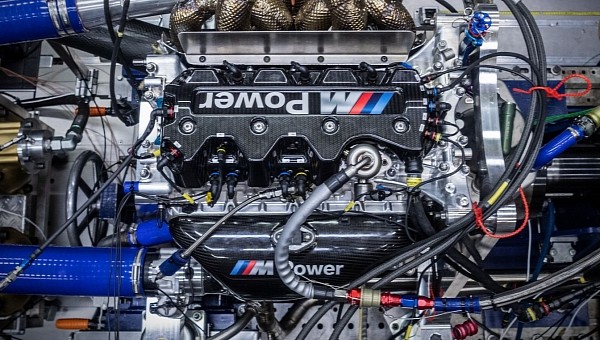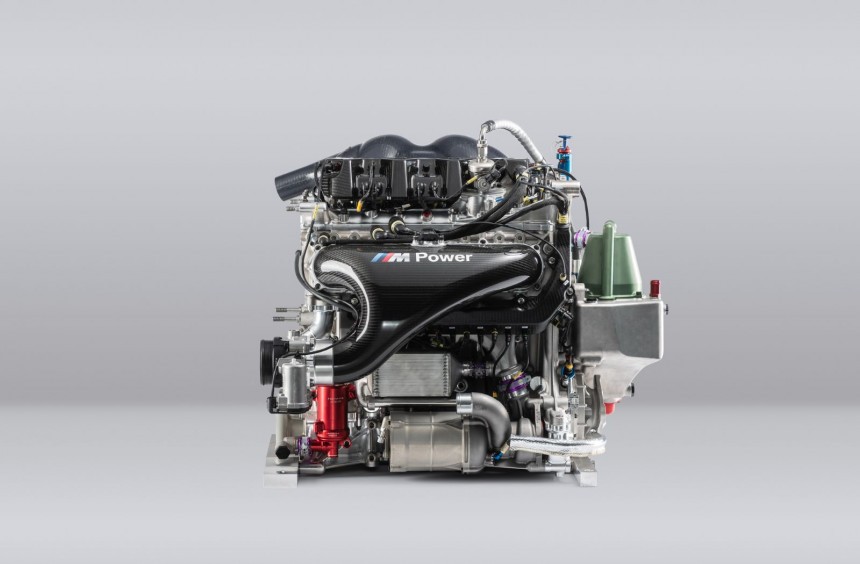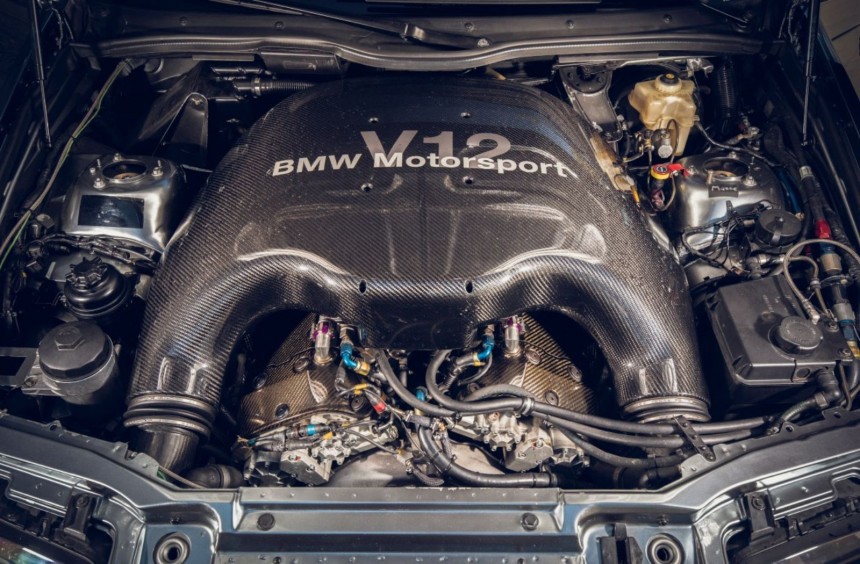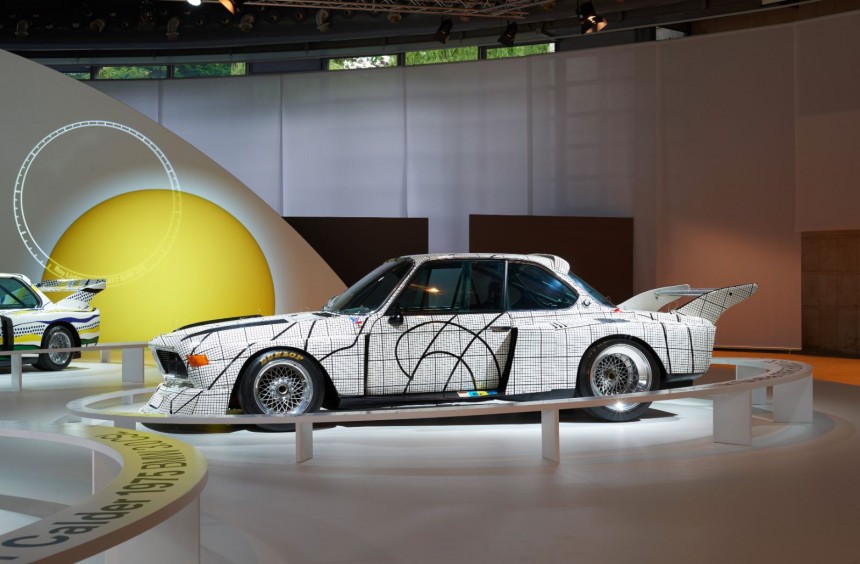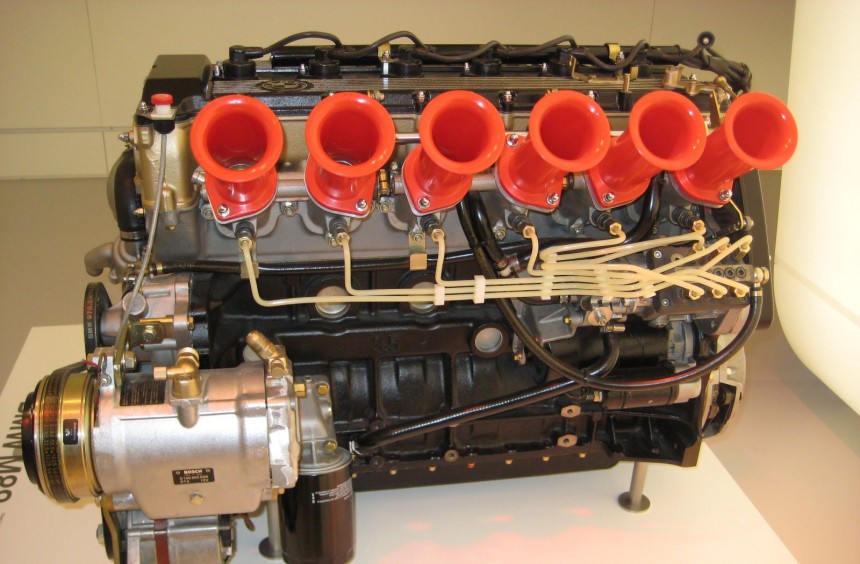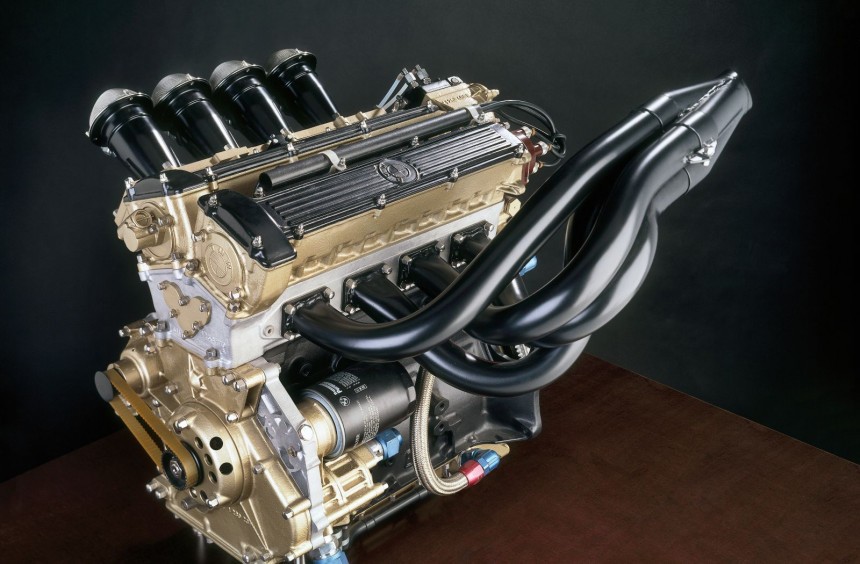For more than 50 years, BMW’s Motorsport division has been responsible for some legendary engines. Those that ended up powering the awesome M-badged road cars are well-documented, so in this article, we’re going to remember some lesser-known, yet extremely powerful race-bred powerplants.
Established in 1972, the division’s journey to automotive greatness started with only 35 employees. Their first task was to create a racing car that could dominate the European Touring Car Championship, as well as a road-going version to gain homologation.
Built on the E9 chassis, the car was named 3.0 CSL and it proved to be very successful in both road and race form, paving the way for other iconic projects.
During the next five decades, BMW M would become a force in the world of motorsport, and thanks to engineering legends like Paul Rosche, the division would create some exciting race engines that could make massive amounts of power.
The most modern entry on our list, the P48 was a turbocharged straight-four introduced in 2019 to conform with new DTM (German Touring Car Masters) Class 1 regulations.
Rated at 600 hp, it may not seem all that impressive for a modern engine, but this figure was attained with full DTM compliance in mind, so, in theory, it could make a lot more without restrictions.
However, what makes it special is its weight. Although it uses a mildly-modified version of the mass-produced B48’s block, the all-aluminum 2.0-liter engine weighed only 187 lb (85 kg).
Used for only two seasons, it didn’t help BMW win any titles, but it remains one of the carmaker’s lightest, most powerful inline-fours.
Developed in the early 1990s on the backbone of the carmaker’s first production V12, the S70 is, unquestionably, the most famous of all BMW M engines.
Regarded by many as Paul Rosche’s masterpiece, early versions of this twelve-cylinder icon powered by a secret E31 M8 prototype, then made it to the streets in the E31 850CSi. However, the most famous iteration, dubbed S70/2, would become the beating heart of the McLaren F1 in 1993.
While the S70/2 was the most famous member of the S70 family, it wasn’t the most powerful. That distinction goes to its race-bred successor, the S70/3, which was used in the V12 LM and V12 LMR prototypes – the latter of which gave BMW its first and only win at Le Mans, in 1999.
The naturally-aspirated, 6.0-liter engine was rated at only 580 hp in Le Mans spec, but a year after winning the famous endurance race, the Bavarians placed it into a production X5, gave it a new carbon-fiber intake and pushed its output to 700 ponies.
As I mentioned before, the M division’s first project was the 3.0 CSL. The first iterations of the European Touring Car Championship racers were equipped with inline-six M49 units that could make around 400 hp. This was enough to help the Germans secure five titles, but headed by Paul Rosche, development of the engine continued.
In 1976, an extensively-modified 3.0 CSL with an artistic livery designed by famous American painter Frank Stella competed at Le Mans. This car was equipped with a new turbocharged six-cylinder codenamed M49/4.
Displacing 3.2 liters and capable of revving up to 9,000 rpm, this monster was rated at 750 hp. Unfortunately, technical issues prevented the car from challenging rivals Porsche, who ended up winning the race. Still, the M49/4-powered 3.0 CSL art car crossed the finish line 10th overall.
Development of the M49/4 continued even further, and when it was time for BMW’s first M-badged car, a 3.5-liter version of the engine named M88 (pictured above) was put together.
Initially, BMW developed the M1 to compete with Porsche in Group 5 racing during the late 1970s and the road version was just a means to get it homologated. Unfortunately, the partnership with Lamborghini, which was set to build the road cars, was a disaster and BMW missed the initial homologation deadline. In the meantime, race-bred M1 competed in a one-make series called the Procar Championship with 460-hp aspirated M88/1 versions of the six-cylinder.
An M88/2 Group 5-spec engine was already developed as early as 1979, but it had to wait until 1981 to showcase what it could do. More similar to the M49/4 than the M88/1 Procar engine, it displaced 3.2 liters and used a turbocharger that helped it make 900 hp. However, by the time it got to race in Group 5 events, the M1 struggled against the likes of Porsche and Ford.
In the early 1970s, the world of motorsport began employing turbochargers as a means to attain more power and, of course, BMW’s newly-formed M division was experimenting with this technology, which led to monsters such as the aforementioned M49/4 or M88/2.
These designs proved the supremacy of turbocharging and led to the division’s most powerful racing engine: the M12/13. A Formula 1 engine, it was built around a cast-iron block shared with the mass-produced M10. Legend has it that Rosche instructed his engineers to source as many used M10 blocks as they could find because these were tried and tested, ruling out any potential casting imperfections.
Displacing only 1.5 liters, the four-cylinder was equipped with Bosch electronic fuel injection and a huge KKK turbocharger that helped it generate massive output figures. The M12/13 was used by multiple Formula 1 teams throughout the 1980s. Although engines were limited to around 850 hp during races, regulations allowed constructors to use their full potential during qualifying. In 1983, a BMW-powered race car was allegedly capable of close to 1,300 hp, while three years later, that figure rose to 1,350 hp.
To this day, the M12/13 remains the most powerful Formula 1 engine ever built and, according to Paul Rosche’s estimates, it was theoretically capable of more than 1,400 hp.
You can read the full story of how the M12/13 was developed in this article and I recommend watching the YouTube video below by 19Bozzy92 if you want to hear the outrageous four-cylinder scream inside a Brabham BT52 chassis.
Built on the E9 chassis, the car was named 3.0 CSL and it proved to be very successful in both road and race form, paving the way for other iconic projects.
During the next five decades, BMW M would become a force in the world of motorsport, and thanks to engineering legends like Paul Rosche, the division would create some exciting race engines that could make massive amounts of power.
BMW P48 – 600 hp
Rated at 600 hp, it may not seem all that impressive for a modern engine, but this figure was attained with full DTM compliance in mind, so, in theory, it could make a lot more without restrictions.
However, what makes it special is its weight. Although it uses a mildly-modified version of the mass-produced B48’s block, the all-aluminum 2.0-liter engine weighed only 187 lb (85 kg).
Used for only two seasons, it didn’t help BMW win any titles, but it remains one of the carmaker’s lightest, most powerful inline-fours.
BMW S70/3 – 700 hp
Regarded by many as Paul Rosche’s masterpiece, early versions of this twelve-cylinder icon powered by a secret E31 M8 prototype, then made it to the streets in the E31 850CSi. However, the most famous iteration, dubbed S70/2, would become the beating heart of the McLaren F1 in 1993.
While the S70/2 was the most famous member of the S70 family, it wasn’t the most powerful. That distinction goes to its race-bred successor, the S70/3, which was used in the V12 LM and V12 LMR prototypes – the latter of which gave BMW its first and only win at Le Mans, in 1999.
The naturally-aspirated, 6.0-liter engine was rated at only 580 hp in Le Mans spec, but a year after winning the famous endurance race, the Bavarians placed it into a production X5, gave it a new carbon-fiber intake and pushed its output to 700 ponies.
BMW M49/4 – 750 hp
In 1976, an extensively-modified 3.0 CSL with an artistic livery designed by famous American painter Frank Stella competed at Le Mans. This car was equipped with a new turbocharged six-cylinder codenamed M49/4.
Displacing 3.2 liters and capable of revving up to 9,000 rpm, this monster was rated at 750 hp. Unfortunately, technical issues prevented the car from challenging rivals Porsche, who ended up winning the race. Still, the M49/4-powered 3.0 CSL art car crossed the finish line 10th overall.
BMW M88/2 – 900 hp
Initially, BMW developed the M1 to compete with Porsche in Group 5 racing during the late 1970s and the road version was just a means to get it homologated. Unfortunately, the partnership with Lamborghini, which was set to build the road cars, was a disaster and BMW missed the initial homologation deadline. In the meantime, race-bred M1 competed in a one-make series called the Procar Championship with 460-hp aspirated M88/1 versions of the six-cylinder.
An M88/2 Group 5-spec engine was already developed as early as 1979, but it had to wait until 1981 to showcase what it could do. More similar to the M49/4 than the M88/1 Procar engine, it displaced 3.2 liters and used a turbocharger that helped it make 900 hp. However, by the time it got to race in Group 5 events, the M1 struggled against the likes of Porsche and Ford.
BMW M12/13 – 1,350 hp
These designs proved the supremacy of turbocharging and led to the division’s most powerful racing engine: the M12/13. A Formula 1 engine, it was built around a cast-iron block shared with the mass-produced M10. Legend has it that Rosche instructed his engineers to source as many used M10 blocks as they could find because these were tried and tested, ruling out any potential casting imperfections.
Displacing only 1.5 liters, the four-cylinder was equipped with Bosch electronic fuel injection and a huge KKK turbocharger that helped it generate massive output figures. The M12/13 was used by multiple Formula 1 teams throughout the 1980s. Although engines were limited to around 850 hp during races, regulations allowed constructors to use their full potential during qualifying. In 1983, a BMW-powered race car was allegedly capable of close to 1,300 hp, while three years later, that figure rose to 1,350 hp.
To this day, the M12/13 remains the most powerful Formula 1 engine ever built and, according to Paul Rosche’s estimates, it was theoretically capable of more than 1,400 hp.
You can read the full story of how the M12/13 was developed in this article and I recommend watching the YouTube video below by 19Bozzy92 if you want to hear the outrageous four-cylinder scream inside a Brabham BT52 chassis.
